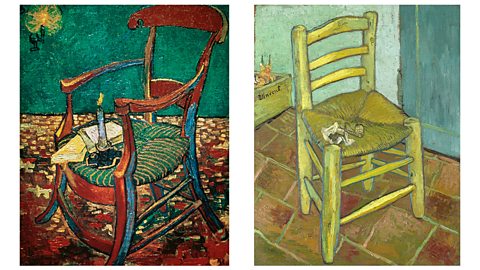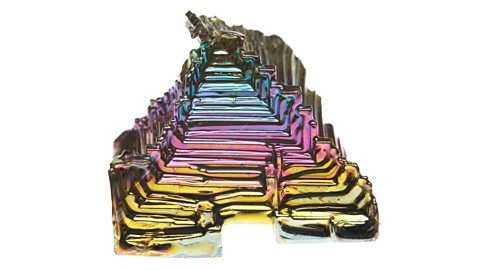It doesnât look terribly comfy, but as Game of Thrones finally enters its endgame, that spiky seat of swords could have its permanent occupant at last.
But where does the Iron Throne stand (or sit) in the pantheon of legendary seating, factual or fictional? Weâve compiled a list of some of the famous chairs in history, literature and entertainment so you can judge for yourself which one youâd rather claim.
King Edwardâs chair
The British throne is perhaps a surprising omission from this list but thatâs because itâs mainly ceremonial. To get to the throne, one must sit in King Edwardâs chair first.

Also known as the Coronation Chair, it is carved from oak and dates back to a point between 1297 and 1300 that has never been verified. King Edward I called for it to be made in 1296 so that the Westminster Abbey-based chair could also contain the Stone of Scone, the coronation stone of Scotland, also known as the Stone of Destiny.
The stone was stolen from Westminster in 1950 by a group of Scottish students. There was a four-month search for the ancient artefact, during which time the thieves had it repaired in secret, after it split in two as they removed it from Westminster. The search ended when the stone was found in Arbroath Abbey, in Angus. It was back in place for the coronation of Queen Elizabeth II in 1953.
In 1996, Prime Minister John Major announced the stone would be returned to Scotland, only coming back to the abbey when it was required for ceremonial purposes. Thirty-eight coronations have taken place on King Edwardâs chair so far.

The Mastermind chair
TVâs most confrontational quiz was created in 1972 by producer Bill Wright, a former RAF gunner, who had been a prisoner of war in Germany. The format is intended to resemble one of the many interrogations he went through, with quiz questions rather than demands for information. The manner in which he was asked for name, rank and number by his captors was replicated in the way each contestant is asked for their name, occupation and specialist subject in the first round on every show.
A black leather chair has been used from the very first episode, with the spotlight on the contestant as they answer questions from the âinterrogatorâ (it was Magnus Magnusson in the first run of the show, today itâs John Humphreys).
When the show was revived in 2003, the leather chair selected for use was an Eames âsoft padâ, originally designed in 1969 by husband and wife team Charles and Ray Eames, the brains behind some of the most recognisable furniture of the 20th century.
The original chair couldnât be re-used. It was given to Magnus Magnusson when the first run of Mastermind came to an end in 1997.

Captain Kirkâs chair
If you ever need to know whoâs in charge on the Starship Enterprise, look to the big chair at the heart of the bridge.

Known as the command chair, itâs become the most sought-after seat in sci-fi. Its original occupant was Captain James Tiberius Kirk, played by William Shatner from 1966 to 1969 on TV and seven films between 1979 and 1994.
Since then, that seat has been taken by, among others, on various vessels in the Star Trek universe, Jean-Luc Picard (Patrick Stewart) in Star Trek: The Next Generation, Kathryn Janeway (Kate Mulgrew) in Star Trek: Voyager and, more recently, Jason Issacs as Gabriel Lorca in Star Trek: Discovery.
Thereâs been a racially and gender diverse series of command chair-takers across the franchiseâs rich history. In 1993, Avery Brooks, as Commanding Officer Benjamin Sisko, became the first black occupant of the seat, and its first single father as well.
Vincent Van Goghâs chairs
Currently part of Londonâs National Gallery collection, the 1888 painting âVincentâs Chair With His Pipeâ by the Dutch master shows a simple wooden chair with a woven seat. Placed upon it is an open pouch of tobacco and an ornate pipe.
It is often contrasted with his other painting of a chair, that of Paul Gauguinâs armchair, also from 1888 and owned by the Van Gogh Museum in Amsterdam.
One is notably more ornate than the other. Gauguinâs chair features a lit candle and a couple of books. When the two paintings appear alongside each other, it sparks much debate between critics of Van Goghâs work.

Some say it shows how the simpler chair represents the artistâs more simple take on life compared to the flamboyant Gauguin.
When the pictures are arranged side-by-side with the chairs facing away from each other, it has been noted that this represents the difficult real-life relationship which existed between the two artists.

The Iron Throne
This is the one chair weâll be hearing a lot about in the coming weeks. When author George RR Martin wrote A Game of Thrones in 1996, the Iron Throne represented who would ultimately reign triumphant over the kingdom of Westeros.
The televised version, made up of many criss-crossed swords and blades, looks like any occupant would need to lay down a few scatter cushions first or face a rather uncomfortable reign.
Aegon the Conqueror was the first character to take this throne while his more unpopular successors include Joffrey Baratheon and Cersei Lannister. Will the series end with someone more palatable (Jon Snow, perhaps�) taking control of the land of Westeros? Fans will know by 19 May, the date the final episode is shown around the world.
Youâll need to be sat down for that one.
This article was published in April 2019

The most weird and wonderful elements in the periodic table
Which element was used to create a reusable laxative? Find out here.

Five times the world didnât end
Given you're reading this, the world hasn't been completely destroyed. Find out why here.

The British scientific discoveries quiz
How much do you know about the inventions and theories pioneered in the UK?
